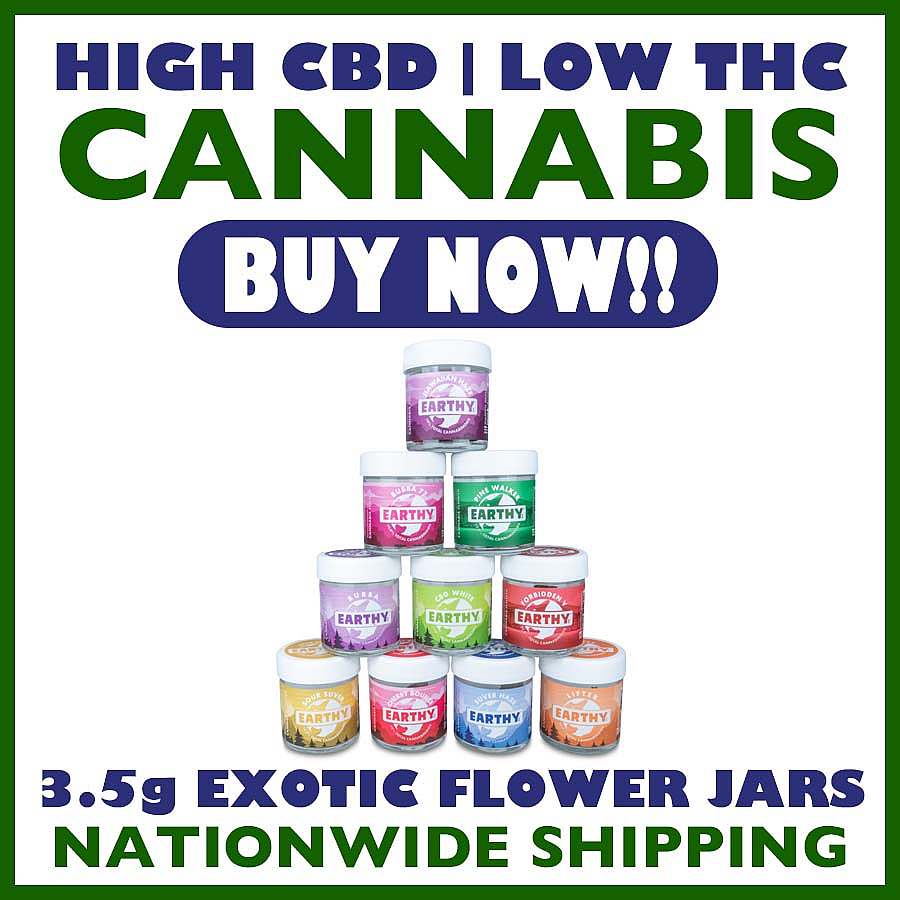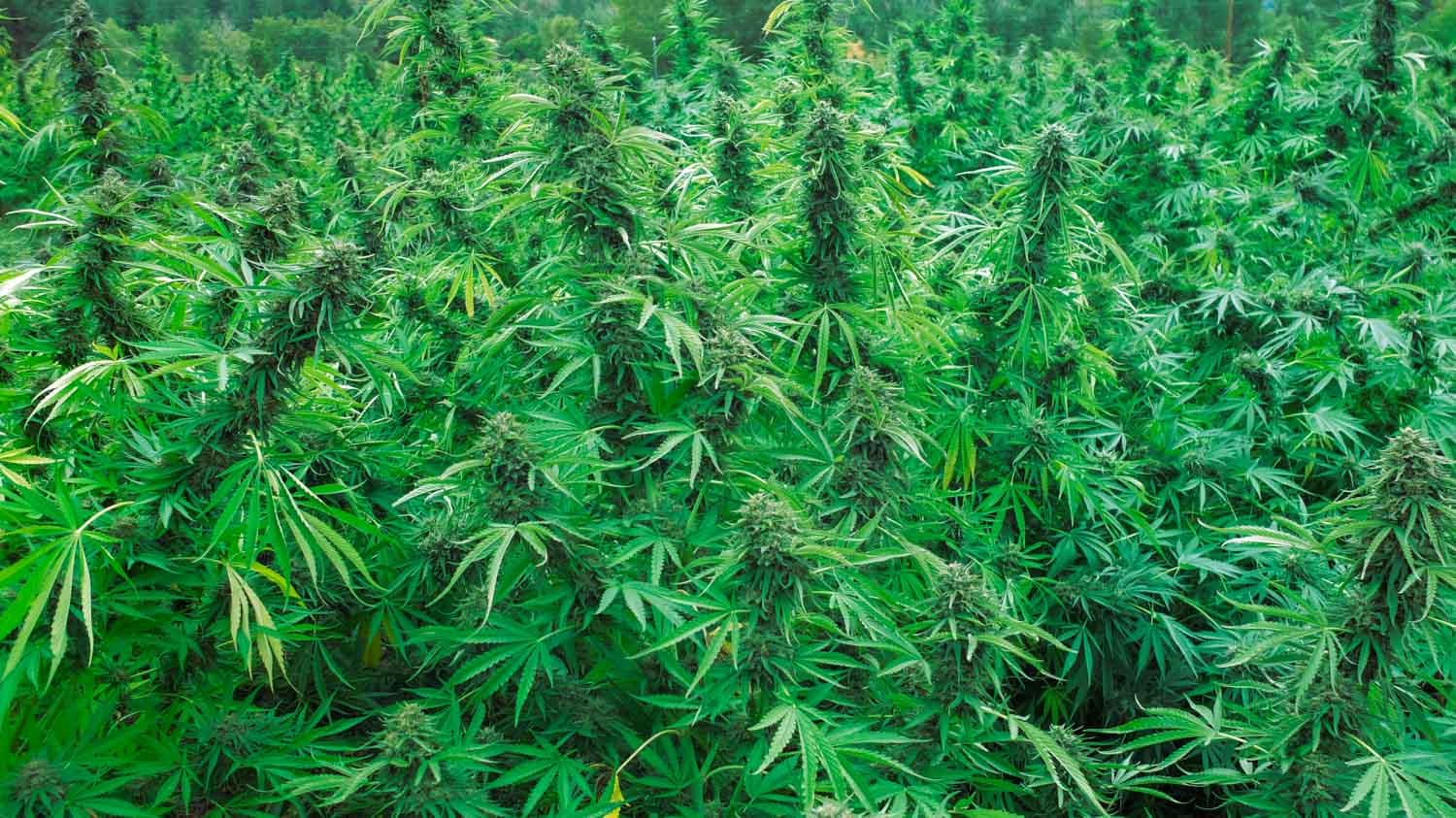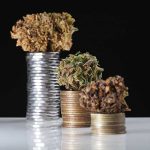How is Organic Cannabis Harvested?
The word “organic” has been used in many different ways over the past few decades. As the cannabis and hemp industry continue to evolve, farmers are looking for ways to stand out amongst competitors. Using organic practices has been a major shift in growing cannabis and hemp and customers are more and more looking for products free of pesticides and unnecessary chemicals.
When growers harvest cannabis flowers, the best practices are designed to reduce pollution, enhance soil and water quality, and foster self-sustaining farms (1). Companies that pride themselves on sustainable practices are always looking for the most environmentally friendly ways to grow their crop.
Organic foods and wellness products have become a standard for healthy living over many years, and the recent major growth of the cannabis market has created a demand for organically produced cannabis as well. A well executed harvest of cannabis plants includes curing cannabis and a well thought out drying process, among other processes we’ll discuss in this article.
Demand for organic cannabis is rising
As the legality and availability of cannabis products increases, savvy consumers want safe, consistent, and high-quality products. Commercial growers harvesting in legal states are turning toward using more organic nutrients and growing medium, looking to increase plant growth and dial in more natural growing conditions. Organic farming methods help ensure these goals while adding to the sustainability of the production and environment (2).
Cannabis has historically been used for a variety of purposes. Every part of the cannabis plant can be used, and in a multitude of sometimes-surprising ways. Cultivated varieties of cannabis are harvested for their therapeutic and psychoactive cannabinoids, whether ingested in original form or extracted to maximize the potential of compounds like CBD, CBG, CBN, and other minor cannabinoids. Additionally, cannabis is an excellent nutritional source many describe as a superfood (3).
The seeds are harvested for their rich proteins and fatty acids—and you can even eat raw cannabis! Cannabis is also a sustainable textile powerhouse. The fibrous stalks, for example, are harvested and processed into eco-friendly materials for clothing, bedding, etc.
Indica vs Sativa?
Indica plants, with shorter flowering cycles, grow well in cold, short-season climates and typically produce relaxing effects when used therapeutically. Sativa plants, which can produce energizing and creative effects, have longer flowering cycles, and are better in warm areas with longer seasons (4). Both varieties benefit from organic methods, largely because of the greatly increased nutrient bioavailability that comes with organic methods (5).
The 2018 Farm Bill removed hemp defined as cannabis (Cannabis sativa L.) and derivatives of cannabis with extremely low concentrations of the psychoactive compound delta-9-tetrahydrocannabinol (THC) (no more than 0.3 percent THC on a dry weight basis), from the definition of marijuana in the Controlled Substances Act (CSA) (6).
This ushered in an unprecedented period of demand for hemp. Following a rush of active experimentation and development, we have the many innovative CBD products available on the market today, with the promise of endless more to come.
Who says it’s organic?
Organic plants must be grown from non-GMO seeds without using synthetic fertilizers and pesticides, so organic producers rely on natural substances and physical, mechanical, or biologically based farming methods (7). Organic fertilizers are made from plant and animal waste, while non-organic fertilizers likely use raw elemental salts.
These salts reduce bio-availability by limiting beneficial microbes and fungi in the soil (5). Bio-availability is important in determining absorption of nutrients and hence the speed and quality of the growth cycle, along with other factors like physical conditions of the soil, soil temperature, moisture content, etc. (8).
The United States Department of Agriculture (USDA) is the governing body in the United States that administers the certification of organic industrial hemp production (9), but even without official certification, growers can follow organic production standards to yield clean and sustainable cannabis harvests.
The USDA publishes The Program Handbook: Guidance and Instructions for Accredited Certifying Agents and Certified Operations, which exists to guide organic operators through compliance with its National Organic Program.
Why farmers choose organic
There are many advantages that may influence farmers’ decision to pursue organic production. Organic farming increases bio-availability and bio-diversity. It also means safer working conditions for farmers and staff throughout the entire growth cycle.
Cannabis plants grown organically have higher purity with no toxins from fertilizers or pesticides. This means less general pollution for the earth and healthier and more productive soil. In addition to the benefits to the farm and staff, purchasers of their yields will rest assured that they’re getting pure organic CBD in every dose.

Why consumers choose organic
There are compelling reasons why consumers want organic products, and why they specifically prefer organically-produced CBD, CBG, CBN, and other hemp-derived products. Organic foods and health products decrease pollution and toxins in the world and deliver clean nutrients to our bodies, which are clear advantages. Nature is our ultimate guide, so creating products that mimic how they grow naturally in the wild is always the goal.
Consumers will always want a final product that is as natural as possible, leaving out harmful toxins and byproducts that can be present when synthetics are used in growing or manufacturing processes.
This is especially important for cannabis which is a bioaccumulator, meaning it is a type of plant that excels at drawing pollutants from the soil without releasing them as waste, and could be contaminated by these elements if grown in non-organic conditions (10).
Research has found that microbes, heavy metals, and pesticides are the most commonly found contaminants in cannabis intended for human consumption, and these can mean exposure to Salmonella, cadmium, fungal spores, and even carcinogenic mycotoxins (11).
Harvest time
Whether the crop was grown indoors or outdoors, there are two common ways to determine if it’s time to harvest. The first is to observe the hair-like strands on the buds, called stigma, which will start to curl and turn from white to orange, or red to brown. This can be done using a magnifying glass or jewelers loupe. Secondly, the trichomes which are resin glands all over the plant, will change from clear to opaque to amber color. Buds should be dense as opposed to airy, depending on the genetics of the plant. Harvesting plants can take time, and it’s important to allow the buds to develop to their maturation.
The plant’s cannabinoids and terpenes are contained in the trichomes, which become fragile at this time. Growers can limit damage by using drying, trimming, and curing practices that minimize agitation in order to preserve these potent products (12).
Why The Last Few Weeks And Days Before Harvest Are Critical?
When growing crops, it’s easy to lose patience when the plants start to bloom! The last weeks of the grow process are some of the most important to stay patient and let the plants fully mature before your cannabis harvest. Keeping your grow room clean is crucial during these last weeks. When trichomes turn a cloudy to amber color, buds are ready to harvest.
The sooner you harvest, the greater your potency and yields will be diminished. The strain with the longest flower-life tends to have higher yields than strains with shorter blooms. It is logical that with longer flowering periods the larger the buds are produced.
After cutting fan leaves from the plant (sometimes referred to as sugar leaves), the plants can begin the process of curing. Fan leaves are the large leaves around the buds, these can be clipped carefully and discarded, or if you are interested in extracting the minor amount of cannabinoids that grow on them, they can be saved for later use. Make sure to take precaution not to rub up against the buds too much when trimming fan leaves, as trichomes will be fragile at this stage.
Curing Process
There are a few common ways to cure cannabis. A common way is to begin properly drying your plants is to hang the flower’s up to let them initially dry out. This can be done with cordage from a ceiling in a climate controlled space. After about a week of drying the buds, clipping them from the plants and putting them in a sealed jar like a mason jar and allowing the harvest to rest is the second step. Wait anywhere from a week to two weeks, opening the jar or “burping” every now and then to let excess humidity out. Be careful not to move buds around too much as this can damage trichomes.
Once buds have been cured in a jar for a few weeks, they should feel spongey: not too try, not too wet! After this time period, they are ready to be taken out of the jar to be consumed.
Organic future
The value of cannabis production done organically is clear to producers and consumers alike and we expect continued demand for organically-made cannabis products. Cannabis users who are interested in natural, toxin-free enjoyment and wellness should always seek high-quality, organically-grown cannabis goods.
References
- Nutrition and Healthy Eating
- The Professionalization of Cannabis Growing
- Health Benefits of Hemp Seeds
- Cannabis Cultivation Intro
- How To Grow Cannabis Organically
- Hemp Production and 2018 Farm Bill
- Understanding USDA Organic Label
- Nutrient Availability In Cannabis Growing
- USDA Hemp Instruction
- Hemp Bioaccumulation: The Good and the Bad
- Cannabis Contamination: Sources, Distribution, Human Toxicity
- Leafly’s Guide to Harvesting Marijuana
Frequently Asked Questions
Is it legal to send CBD related products through the mail?
Yes, but even though these products are federally-compliant, individual states may have their own regulations about purchasing or using hemp-based products, and these are subject to change. You should check your state and local rules before ordering. We ship nationwide.
What does “hemp-derived” mean?
Hemp-derived means made from hemp, sometimes also referred to as industrial hemp. The 2018 Farm Bill (see next section) established new federal legal definitions and rules for hemp, including that hemp and “and any part of that plant, including the seeds thereof and all derivatives, extracts, cannabinoids, isomers, acids, salts, and salts of isomers, whether growing or not, with a delta-9 tetrahydrocannabinol concentration of not more than 0.3 percent on a dry weight basis” may be used for production, sales, transport, and use.
Are hemp products safe?
Yes, hemp and hemp derived products are safe when they are produced with proper and safe practices. Look for a product’s COA. A certificate of analysis (COA) is a document attesting to a product’s laboratory analysis and testing for cannabinoids and adulterants.
What is a COA?
A certificate of analysis (COA) is a document attesting to a product’s laboratory analysis for cannabinoids and in some cases adulterants, heavy metals and pesticides.It is a useful tool for cannabis producers and customers to ensure quality and trust.





